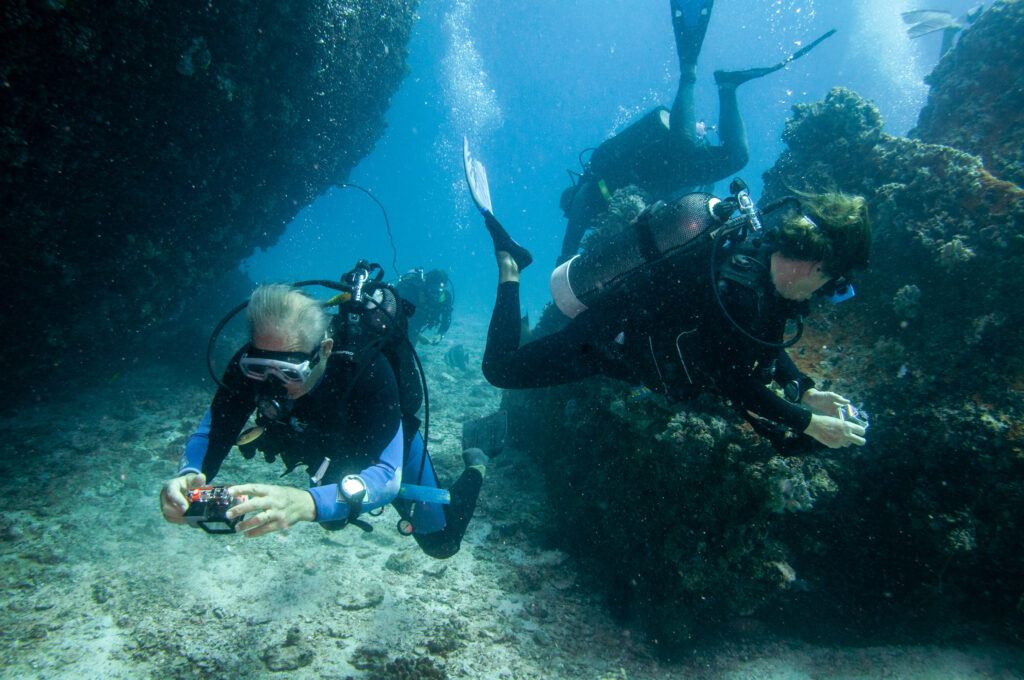What is the Frenzel Maneuver?

The Frenzel Maneuver is a specialized technique used primarily in scuba diving and freediving to equalize pressure in the middle ear. Named after the German Luftwaffe commander Hermann Frenzel who developed it during World War II, this maneuver has become a crucial skill for divers. Proper equalization prevents discomfort and potential damage to the ear caused by changes in pressure during descents and ascents in water. The Frenzel Maneuver involves closing the vocal cords and using the tongue to compress air into the Eustachian tubes, allowing for more effective pressure regulation compared to other methods.
What is Pressure?

Pressure is a fundamental concept in physics, defined as the force exerted per unit area. In the context of scuba diving, understanding pressure and its effects is crucial for safety and efficiency. Pressure plays a pivotal role in determining how divers experience the underwater environment, affecting everything from breathing to buoyancy. As divers descend into the water, the pressure increases, impacting both their equipment and bodies in significant ways. This article will discuss the principles of pressure, its effects on the human body, the health risks associated with changes in pressure, techniques for managing these changes, and the equipment designed to withstand them.
What is Vertigo?

Vertigo, a sensation of spinning or dizziness, can significantly impact one’s sense of balance and orientation. In the context of scuba diving, this condition becomes particularly relevant and potentially hazardous. Divers who experience vertigo underwater may struggle with maintaining their equilibrium, which can lead to disorientation and dangerous situations. This article delves into the causes, impacts, diagnosis, prevention, and management of vertigo specifically for scuba divers.
What is a Squeeze?

In scuba diving, “squeeze” refers to the various types of barotrauma that can occur when air spaces within the body are subjected to pressure changes during a dive. As divers descend and ascend, the pressure exerted by the surrounding water changes, which can cause discomfort or injury if the pressure within the body’s air spaces does not equalize properly. Understanding and managing squeeze is crucial for the safety and comfort of divers, as it can affect various parts of the body including the ears, sinuses, teeth, mask area, and even the suit.
What is a Reverse Squeeze?

What is a Reverse Squeeze? A “Reverse Squeeze” is a phenomenon experienced by scuba divers when ascending from a dive, where an inability to release pressure from enclosed spaces in the body results in pain or discomfort. These enclosed spaces typically include the sinuses, the middle ear, and the area inside the diving mask. Underlying […]
What is a Valsalva Maneuver?

What is a Valsalva Maneuver? The Valsalva Maneuver, named after Antonio Maria Valsalva, the 17th-century Italian physician who first described it, is a technique commonly used by scuba divers to equalize middle ear pressure during a dive. This maneuver is vital for maintaining ear health and comfort while diving, as failure to equalize pressure can […]
What is a Toynbee Maneuver?

What is a Toynbee Maneuver? The Toynbee Maneuver is a strategy employed in scuba diving and other activities that involve significant changes in pressure, such as flying or mountain climbing. Named after British physician and researcher Dr. Arnold J. Toynbee, this method is designed to equalize the pressure in the middle ears, an essential procedure […]
What is Ascent when Diving?

Ascent refers to the upward movement a diver makes as they transition from being submerged underwater to reaching the surface. This process is an essential phase in scuba diving, directly impacting the safety and health of the diver. Ascent is not necessarily a straightforward or continuous journey from depth to the surface; it may require planned pauses, known as decompression stops, to help the body adjust to pressure changes and avoid decompression sickness, a condition commonly called “the bends.” In scuba diving, a controlled and deliberate ascent is crucial to maintaining well-being, preventing injuries, and ensuring a safe return to the surface. This article will explore the importance of ascent, its stages, best practices, and the potential risks divers face during this critical part of the dive.
What is Alternobaric Vertigo in Scuba Diving?

What is Alternobaric Vertigo in Scuba Diving? Alternobaric vertigo, commonly experienced by scuba divers, is a form of dizziness induced by unequal pressure changes in the middle ear. Though typically mild and short-lived, it can occasionally persist and cause complications if not properly addressed. This entry will explore the causes, symptoms, prevention, and management strategies […]
